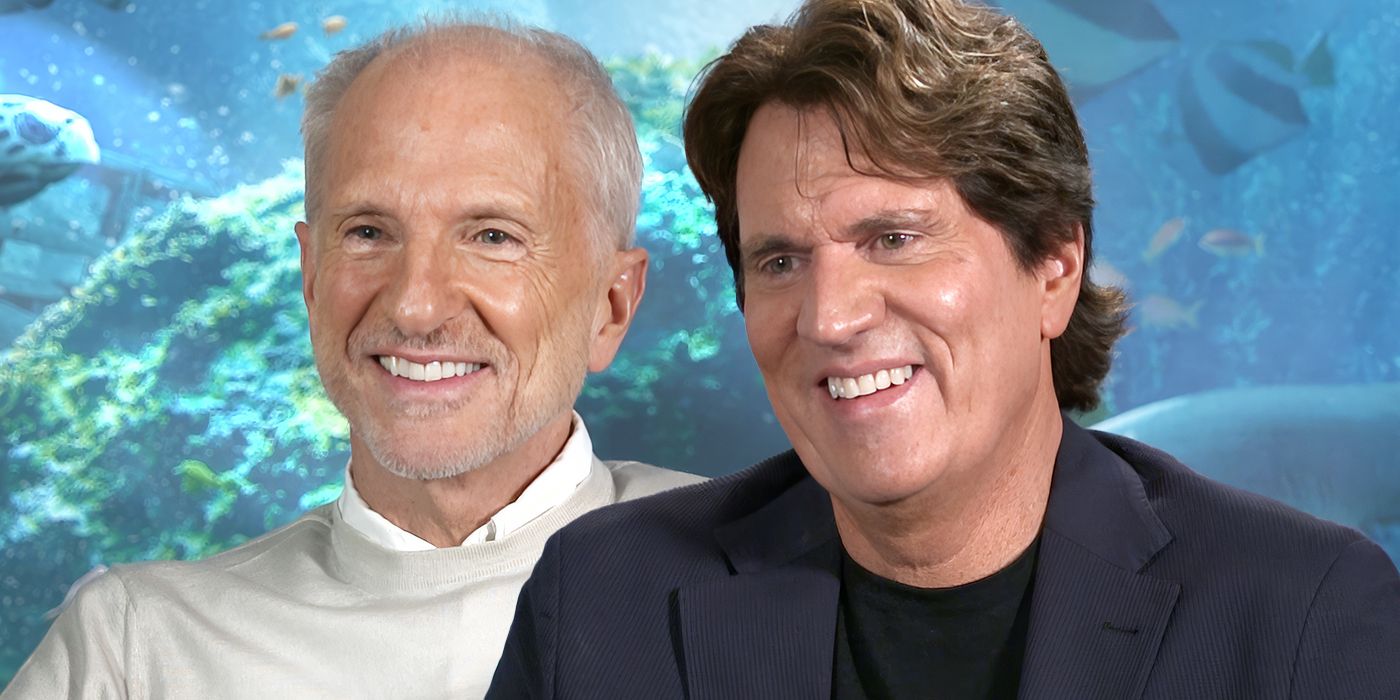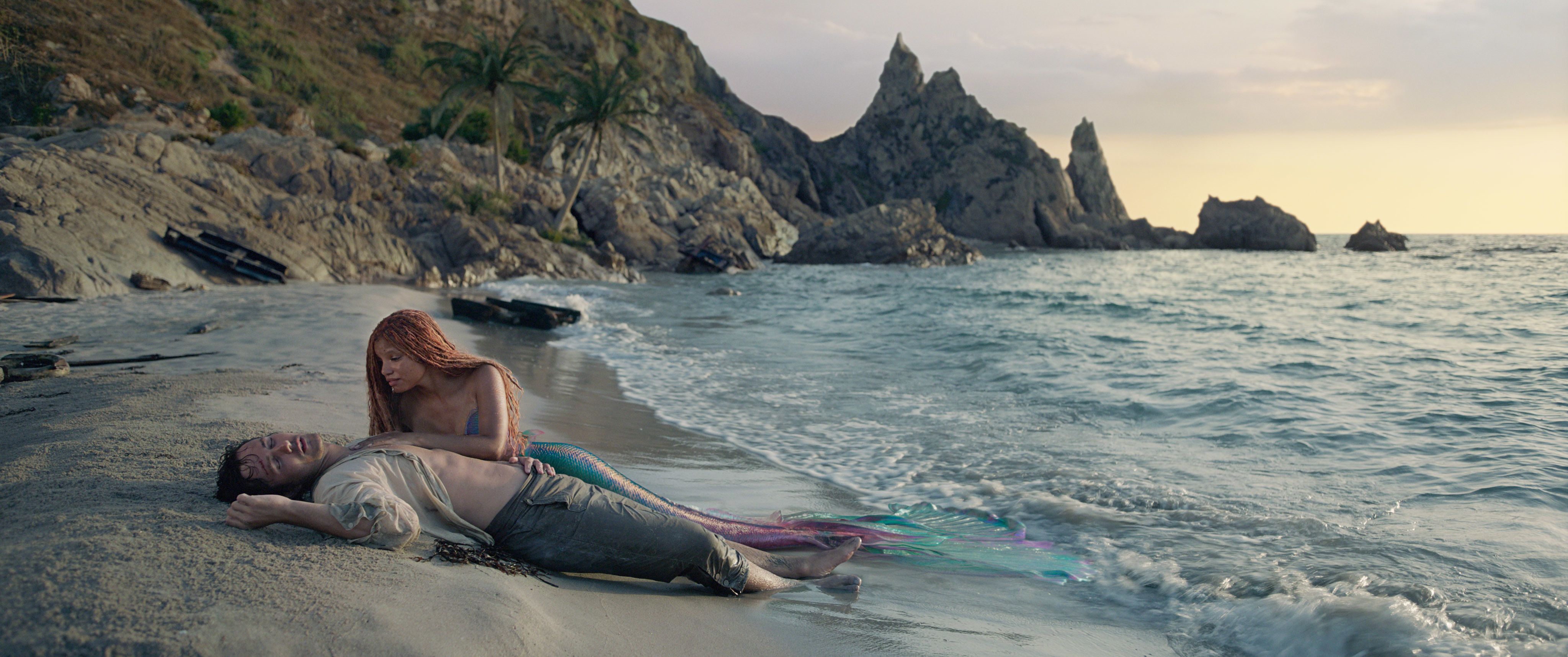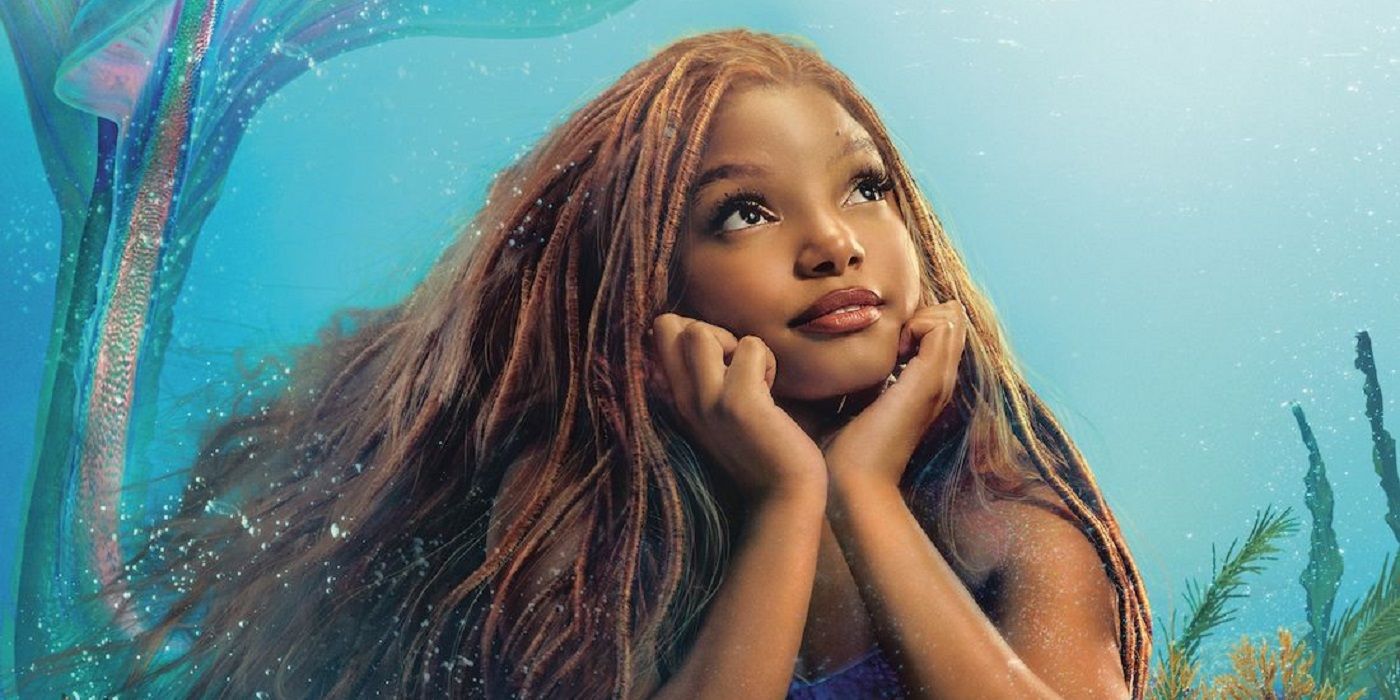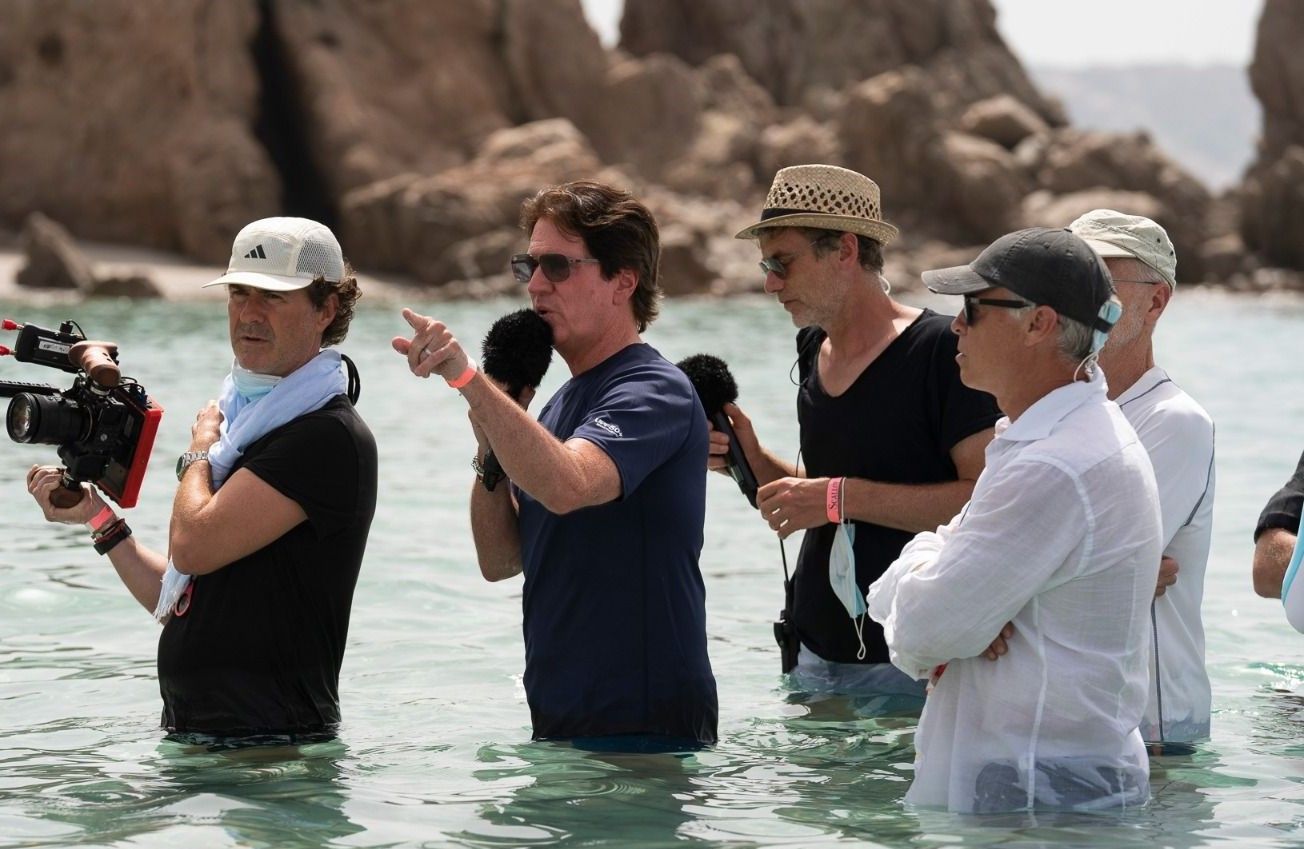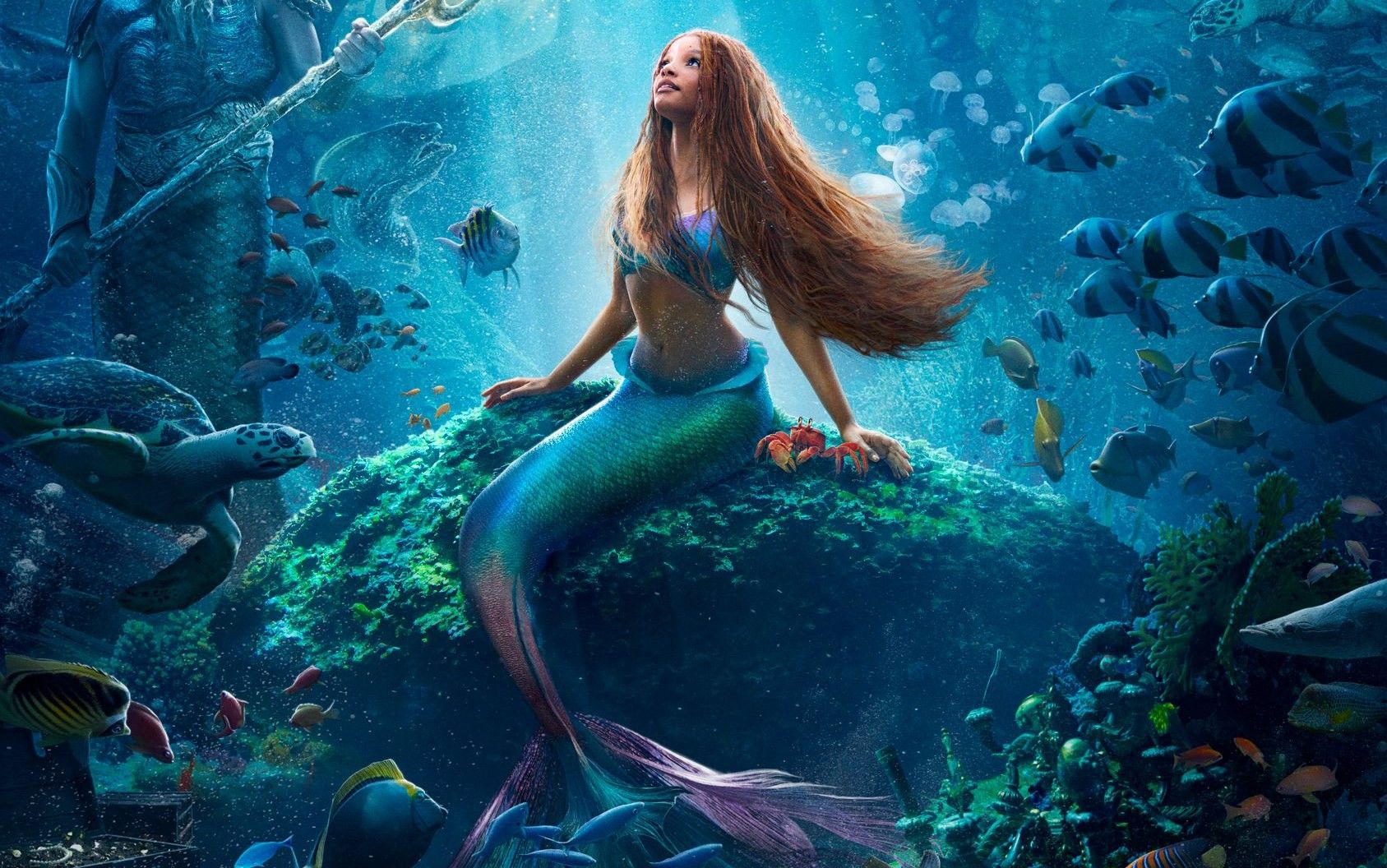Of all the Disney live-action remakes, Rob Marshall’s The Little Mermaid, starring Halle Bailey as Ariel, certainly presented unique challenges, considering half the film takes place under the sea. Ahead of the highly-anticipated May 26 premiere, nearly five years in the making, Collider’s Steve Weintraub sat down with Marshall and producer John DeLuca to dive into some of the behind-the-scenes magic.
During their interview, which you can watch or read below, the Disney duo delight in the entire project, from the conception where they pulled inspiration from the original 1989 film and Hans Christian Andersen’s 200-year-old fairytale, to their “methodology meetings.” Marshall digs into the technical aspects of achieving underwater scenes and says they employed “every kind of apparatus you can possibly imagine,” as well as the expertise of the Alvin Ailey Foundation for the Oscar-winning “Under the Sea” number. As far as the story elements, which DeLuca says was “paramount,” Marshall also discusses what it was like during Bailey’s “otherwordly” audition, and how the part was always hers.
According to the two creatives, the cast essentially chose itself. Alongside Bailey, The Little Mermaid features Jonah Hauer-King as Prince Eric, Javier Bardem as King Triton, Melissa McCarthy as the evil sea witch Ursula, Awkwafina as Scuttle, Jacob Tremblay as Flounder, Daveed Diggs as Sebastian, and Noma Dumezweni as an all-new part, Queen Selina.
COLLIDER: First of all, I want to start with congratulations. This is a really, really hard movie to pull off and I'm just gonna say congrats. So I have a million questions, how did you decide which of the iconic moments from the original film you wanted to bring and not mess with, and which were the moments you were like, “I can play with that one?”
ROB MARSHALL: Well, you know, there are certain iconic moments – Listen, we're a fan of the original film, too, just like all the fans that love it, and so there are things that are sacred, I feel, just as important as a lyric or even a line of dialogue. There are things you hold on to, images that you hold on to, and we knew we needed to hold on to those. But at the same time, this is a completely different genre. You're in a live-action form, there's so much more opportunity to expand, to deepen, to actually infuse with true emotion, you have real people there and so that was exciting.
As we started to work on it, we thought… Listen, an animated film from 1989, which is obviously beloved there, that's the bones of what you're working from, but we went directly back to the Hans Christian Andersen tale, first thing, and we found a very emotional and modern story. So it was written almost 200 years ago, and it’s so contemporary and timely about a young girl who feels displaced, wants something different in her life, and she goes on this epic journey of self-discovery to break down the barriers between herself and people that are different than her, the human world. And that was very moving to us that she is working to build a bridge to break down the wall between her and and someone that's different than her. And so, that sort of sense of acceptance and tolerance, as you say, John, was very profound, and so we thought, “Wow, we have an opportunity to do something that has a deeper message.”
This is a jokey question, and I would imagine a lot of people wanted to be in this movie, these are great roles, so who offered the best bribe?
JOHN DELUCA: [Laughs] I wish!
MARSHALL: [Laughs] There were no bribes involved at this point.
DELUCA: They’re all too respectful.
MARSHALL: Our goal when casting, just so you know, is that we never actually ultimately have to even make a choice, it's sort of chosen for us. That's what happened here on every level, with every character. These people claimed the roles for themselves, first and foremost with Halle.
We auditioned so many people, every ethnicity, every kind of person we could find. I mean, it was literally hundreds of people, and the irony, of course, is the first person that walks through the door was Halle Bailey. She literally came in and said, “Should I read or sing first?” We said, “We'd love you to do whatever you like.” She said, “I'll sing first.” She shut her eyes, I remember that, started to sing “Part of Your World,” and it was so emotional, it was so moving, I was in tears at the end. You remember John? I was sitting there, I was in tears at the end of this song, and I turned to you John, I said, “Is this Ariel?”
DELUCA: Well, she had this beautiful mix of this childlike innocence and mature strength, and then this otherworldly quality, and then the voice, so it was kind of evident.
MARSHALL: And we thought, “Is this it?” But we then continued to look and look and look and look, but she'd set the bar so high. She came in many times, too, during the process, but it was like no one surpassed that. And then, we did a screen test with her and it was just so obvious. And so, once again, she claimed the role, it really was her decision. She said, “This is my role.”
I think a lot of people watching the movie will not understand the technical complexities of making this particular film.
MARSHALL: Well, that's good in a way. I mean, I have to say that was the goal. We never wanted the technical aspect of the film to lead it.
DELUCA: He kept saying it, “The story is paramount.”
MARSHALL: But if you saw how it was made, oh my Lord!
I'm assuming at some point there's going to be like a behind-the-scenes documentary.
MARSHALL: Yeah, there's some wonderful ones, yeah.
If you don't mind, what was one of the things that you really didn't know how you were going to solve to make this film work?
DELUCA: I just remember– Just the logistics of the whole thing! We wrote an outline and we came to LA and spent two months with everyone in this big space, all our creatives, and we [were] just, “How are we going to make the first step?” And this one [gestures to Marshall], he's just so patient and listens to everybody in the room, and we just started having methodology meetings, and we found a way in.
MARSHALL: Yes, I mean, it involved, obviously, a blue screen for all the underwater work, and every kind of apparatus you can possibly imagine; A new technique called Anima, which is when something that's too impossible to actually film because it's just too physical, or no one could do it, that we then applied their face – it's even different than motion-capture – to a moment that was just too complicated, and that was something that we actually were able to do with cameras and light, so that was incredible.
DELUCA: But the planning, every step of the way, we would have to map it out in our heads to decide what we're doing, then we had to teach the actors to work like that, then we had to teach the stunt people because all these different apparatus came with 10 to 20 stunt people that have to breathe with the actor, know every line.
MARSHALL: And time it because it's choreography. We had so much prep and so much rehearsal. I mean, I will say the most complicated piece, for me, was “Under the Sea” because you have one live actor, but a massive production number, and probably the most important number in the piece because it's the Oscar-winning number, and so it had to be something really special. I remembered that Walt Disney had worked with the Ballet Russes company when he was creating Fantasia because they needed to work from some template, some kind of movement, some kind of bodies, and so I thought, “Well, that's what we should do. We should work with a company.” So we brought the Alvin Ailey Foundation over to London and we had them literally play all these different sea creatures, this extraordinary dance company. And so, every little movement that they did was trying to replicate these different sea creatures. We had chosen all these amazing creatures–
DELUCA: Real.
MARSHALL: –fish, and wonderful creatures; mimic octopus and limpets and flat worms, and I mean, every kind to create this number. It was that, it was using them as a template for our artists to work from, but also all the storyboard work we did, previous work, to make that all come together. So that's a miracle of a musical number.
Sometimes I watch a movie and the CGI really pulls me out, but the CGI in this is exceptional, it really is.
DELUCA: That was our goal, that was his goal from day one. He would always say, “This is the most technical thing we've all ever done. The most important thing is the story, we cannot let that technical exercise lead,” and so that was his mantra.
With the CGI it really does look like you put the camera under the sea, you know what I mean? So talk a little bit about how you pulled that off with the technical limitations that you were up against.
MARSHALL: Well, we have an amazing visual effects supervisor, Tim Burke, who actually led this extraordinary team of people. We explained what we wanted, we had illustrations, our production designer, John Mhyre, our cinematographer (Dion Beebe), we all knew what we were doing, we were all on the same page. We wanted a photo-real world. We wanted to believe we were in that world because if you believe you're there and you're deep there in the sea, all the things, even the light from the darkest place, which is Ursula's lair, to the brightest place, which we called Ariel's Ledge, where she meets Scuttle for the first time in our film, the gradations of the water, it was all so very specific, and that's why it took four and a half years. We did not settle, we would not settle. It had to be every single moment–
DELUCA: Very clear communication with the artists was very crucial to us.
MARSHALL: Yes, every turtle, every fish, every moment was discussed.
DELUCA: Every bubble.
MARSHALL: [Laughs] Everything! It was insane. Every strand of hair is added. It was insane, but it was like climbing Mount Everest. But we felt like, you know, at least we got there to put that flag on the top, that's for sure.
The Little Mermaid is part of our world on May 26. You can check out our interview with Awkwafina and Jacob Tremblay below.

